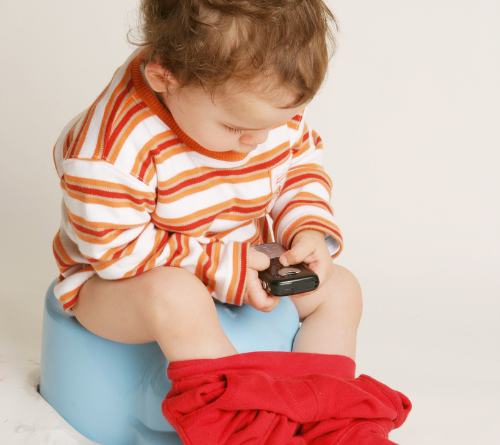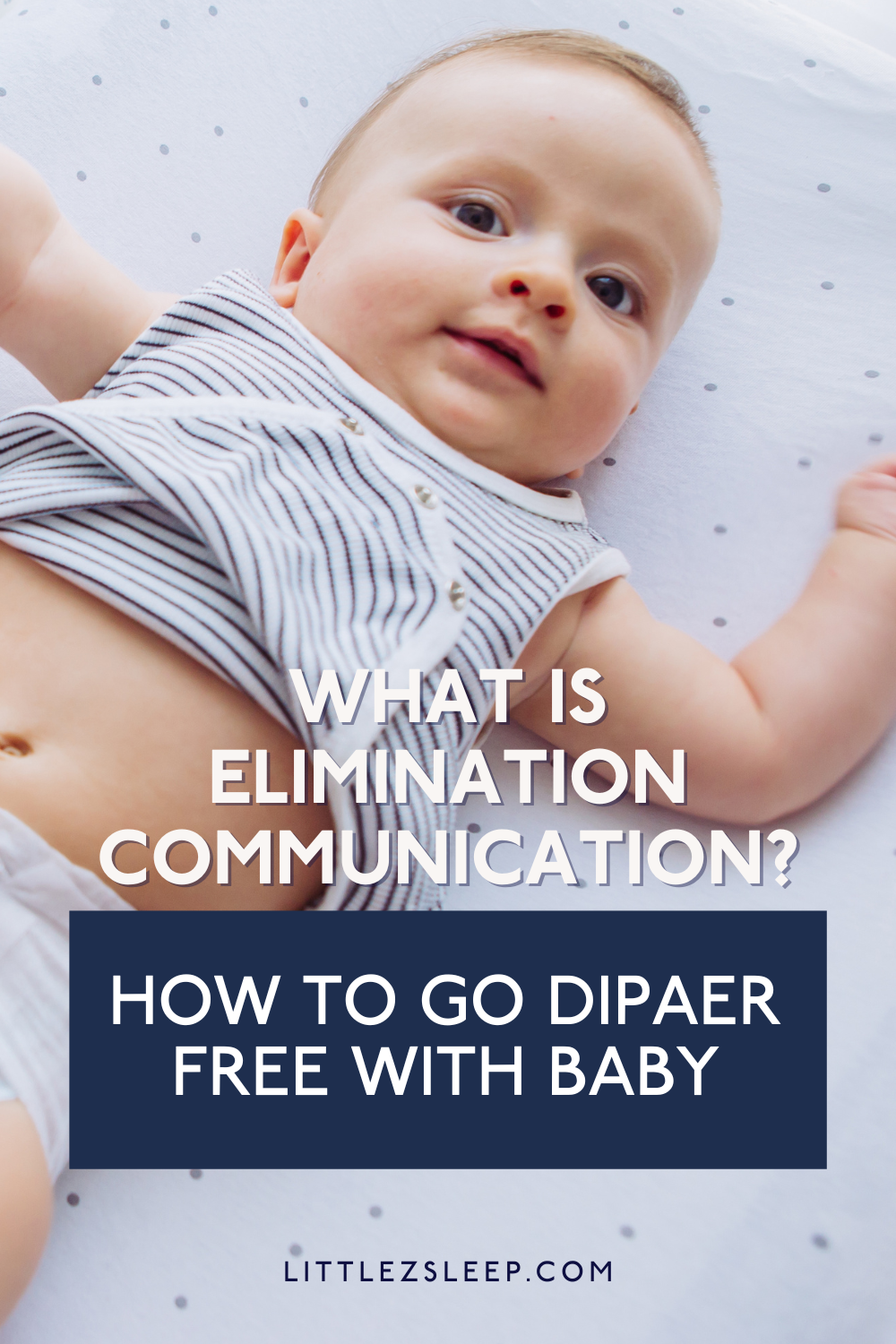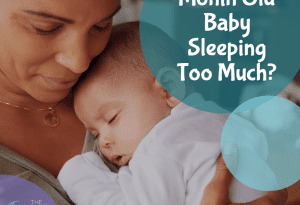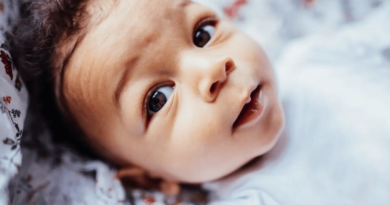What Is Elimination Communication? Go Diaper Free for your baby!
Have you ever heard of Elimination Communication? Simply put, Elimination Communication is learning to read your baby’s cues and potty train them starting at 0-4 months old!
I certainly had not until about 2-3 years ago when I shared about the Potty Training Consultant, Allison Jandu, and I had one person message me and ask if I would talk about Elimination Communication as an option for potty training. So I said, “Sure, what is that?!” I’d never heard of it before!
Well, it turns out there is someone who is quite the expert on Elimination Communication, or EC, to learn from today, Andrea Olson of Go Diaper Free.
Now, the coolest thing about what Andrea teaches is that you will know once you hear about it if this is for you.
The beauty is that as a parent, you get to decide what route you want to go down and what path you want to take your family on! That is an amazing concept because a lot of the time you’re just going to fall into what society says or maybe fall into the patterns that your family took. But you have the opportunity as a parent to carve your own path. And I’m so grateful that I was able to learn about elimination communication.
At the time that I had babies, I probably would not have chosen this method, and that’s mostly because I was completely overwhelmed with my first – if you’ve been around Little Z’s for any time at all, you have heard me talk about that! I didn’t know which way was up, I was completely and utterly confused on sleep and schedules and feeding and everything. So I probably would not have chosen this even if I had known about it.
But what I think is awesome is that you are going to know today whether or not this alternate option for potty training is right for you!
ABOUT ANDREA OLSON OF GO DIAPER FREE
Andrea is a mom of 6 and potty trained all of her children from birth. They typically use diapers as a backup but by the time all of her children walked, around 12 or so months, they had all stopped using daytime diapers. They caught most of the poops in the potty from the very beginning of all of their lives!
Andrea has been teaching elimination communication to new parents for the last dozen or so years, just to show them that there’s a possibility besides just waiting to potty train until children are “ready” by typical standards. (You can hear more of her story of how she initially got into elimination communication by listening to the podcast here!)
SIGNALS TO LOOK FOR FROM YOUR BABY
Sign #1: The first fuss after feeding
The Dunstan Baby Language defines 5 basic cries that every newborn makes, regardless of what language they are born into in their home. There are sounds for being tired, hungry, and even discomfort, which Andrea most associates with “I need to go to the bathroom.”
Especially with a newborn baby, after they wake up and they feed, the first fuss after feeding is always a signal. With a newborn baby, that’s going to be about five or 10 minutes after feeding.
So first fuss after a feeding, you take the diaper off, hold them over something (a sink, the potty, a mixing bowl, a top hat potty, etc.) where their back is leaned up against your chest.
Then in the EC position, as their neck is supported by your chest, you hold them by the underneath of their thighs and you make the sound of running water for pee and a small grunt for poop.
And first fuss after feeding, if your newborn baby is 0-4 months old Andrea would say she is 100% sure that they’re going to pee. That first fuss is often a discomfort cry.
Signal #2: When they wake up
We can relate to this, adults have to go to the bathroom when we wake up – we have a hormone that keeps us clean and dry when we’re sleeping. And in between sleep cycles, sometimes we go to the bathroom. The same thing happens when babies wake up.
Some babies won’t go back to sleep unless they relieve themselves first. So it can interfere with sleep if a baby’s really sensitive to their needs to go to the bathroom.
When they wake up in the morning or wake up from a nap, it’s a great time to offer what Andrea calls a “potty-tunity” or an arbitrary opportunity to potty. This is not so much a signal but based on timing.
Signal #3: Catch them in the moment
When your baby is starting to poop, instead of waiting for them to finish before cleaning them up, tell them to wait a minute, open the diaper, hold them over something in that same position, which is a deep squat, which is how we’ve all been pottying for human history. Then make the grunting noise over something and you will probably catch one or you’ll get the other half of it.
WHEN TO BEGIN ELIMINATION COMMUNICATION (EC)
Between 0-4 months, before they’re mobile, is usually the easiest place to start. They signal the best at that time, so you can build up your own habits and your confidence with it.
After they become mobile, it’s a little bit more of a moving target. You’ll rely more on timing because they’ve stopped signaling for a while.
15-18 months can be a turning point or more of a gray zone where you can go either way and after 18 months, stick with potty training because EC will not work as effectively.
But as Andrea would say, lots of people start right when they find out about it and it’s okay to start at any time! You’re just going to do slightly different things at each time, which Andrea covers in her book.
ENCOURAGEMENT TO DO WHAT WORKS FOR YOUR FAMILY
For so many of us, EC isn’t something that we’ve ever even heard about when we have young children. Andrea goes into some of the history of how diapering even came to be in modern times like it is now in the episode (listen here!) but both of us agreed completely that the best part is as a parent, you get to choose what works for your family!
Whether that has to do with sleep or how you potty train, the time that we “lose” as parents is when we don’t actually get to consciously make decisions for ourselves. We let others make those decisions for us or think we have to do something a certain way because that’s how it’s “always” done.
Just like with decisions on how your family handles sleep or potty training, you have the opportunity as a parent to carve your own path. And I’m so grateful that I was able to learn about elimination communication today. I hope it’s helpful to you in this potty training series as we help your families be happy, healthy & well-rested!
SEE THE FULL POTTY TRAINING SERIES
We’re ending a full potty training series on the LZS podcast, so be sure to check out the past episodes here:
Potty Training 101 with Allison Jandu
Nighttime Potty Training Tips For Boys





